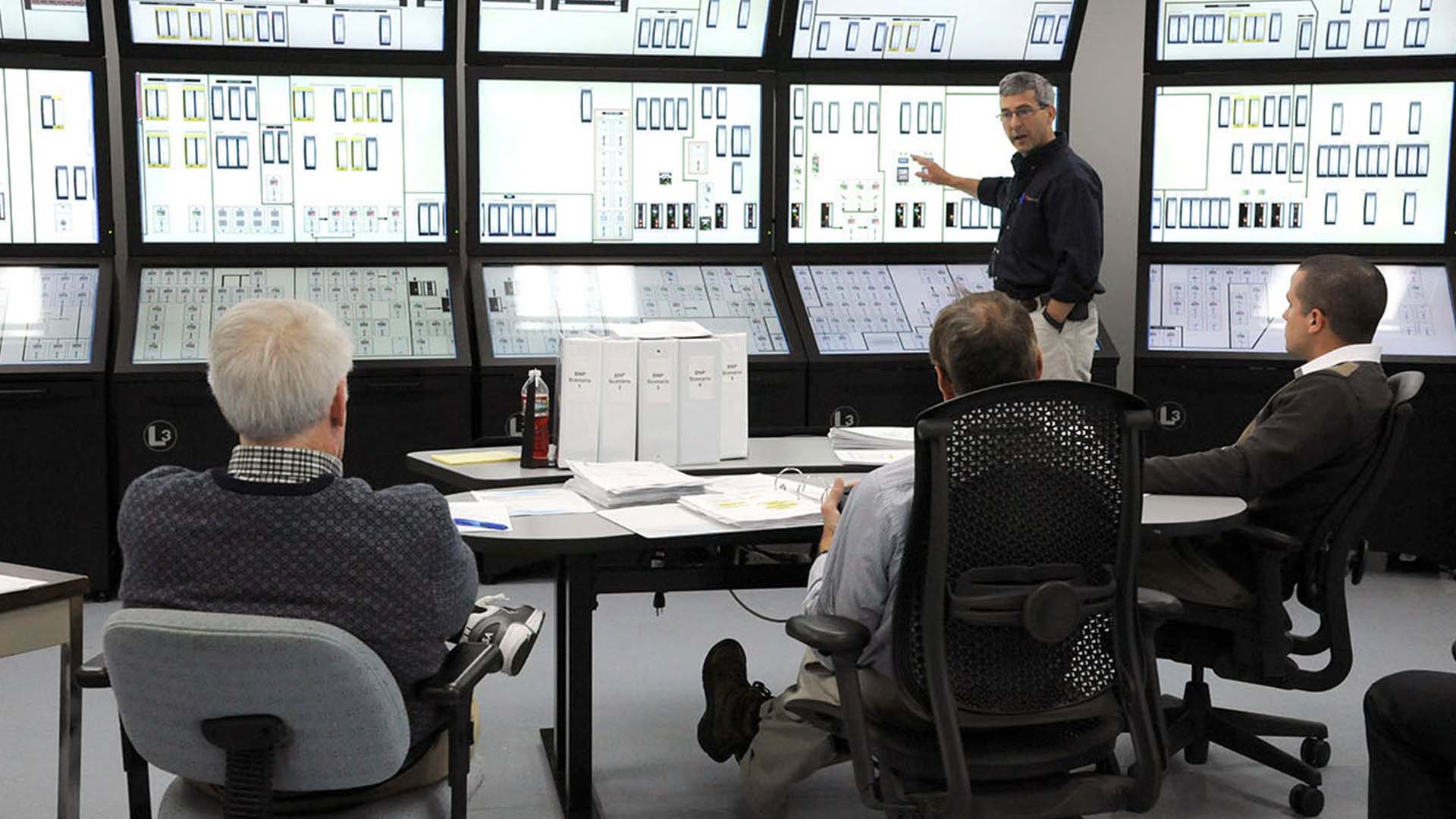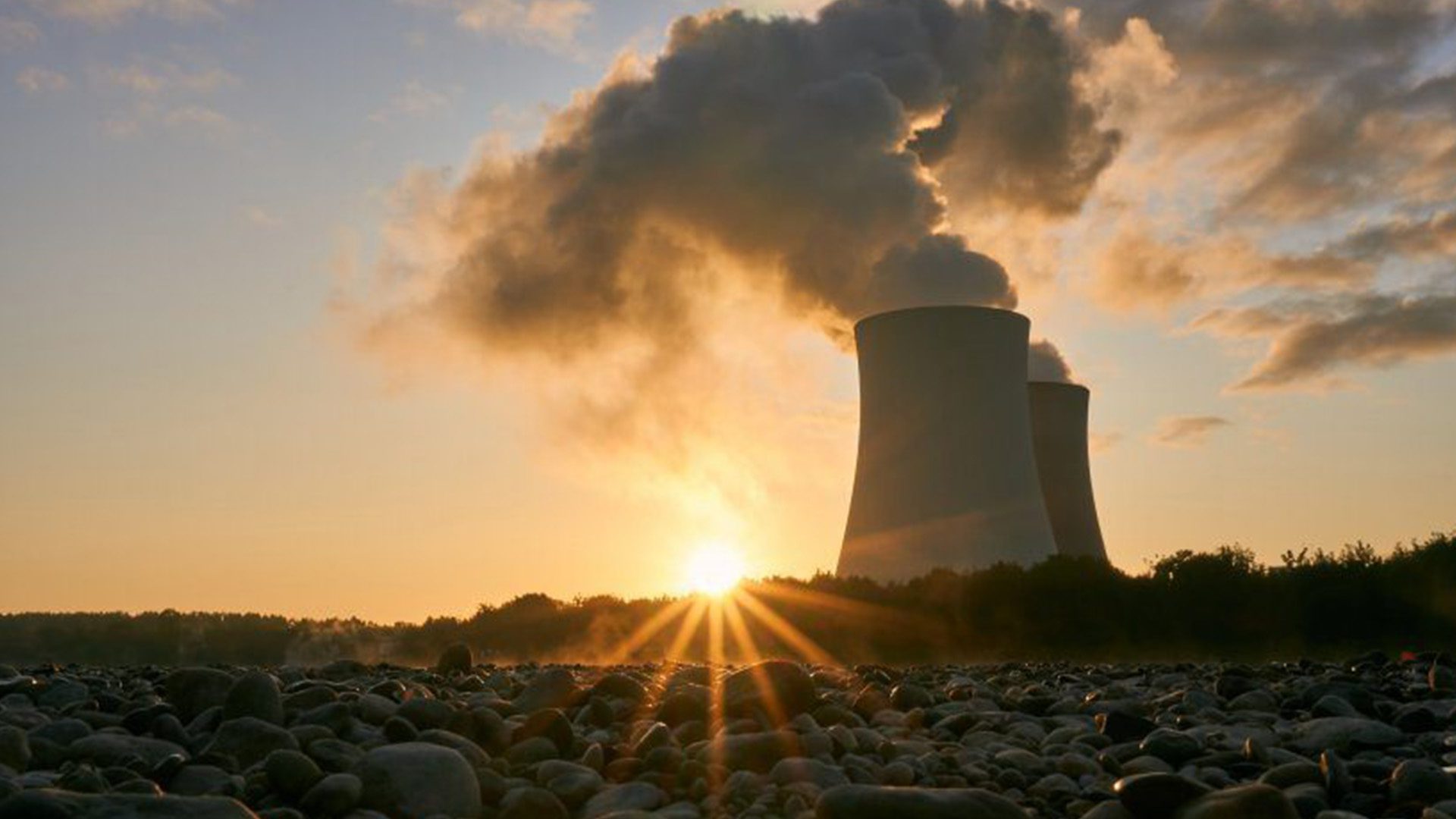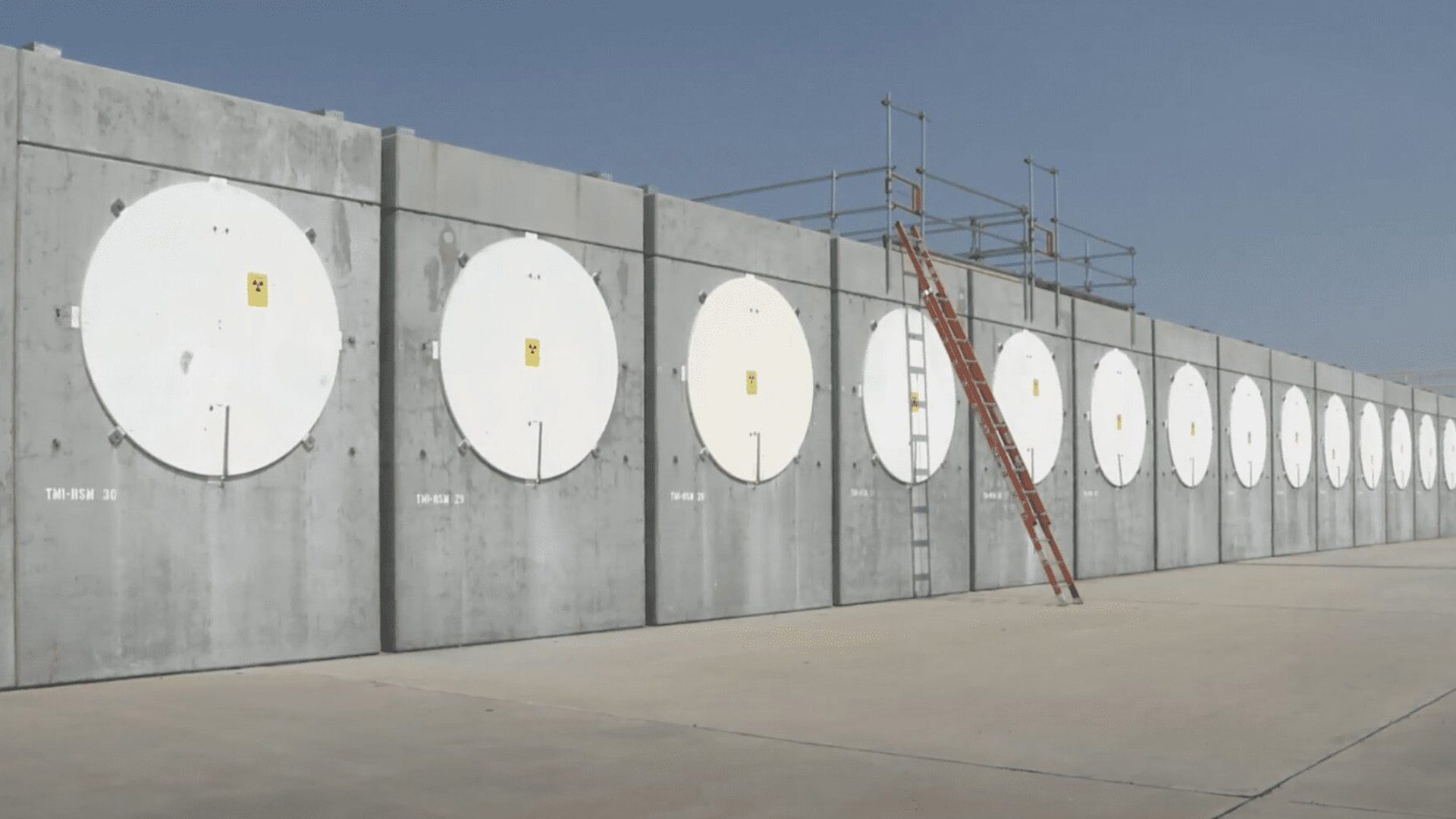There are many misconceptions about all types of energy, but none is more talked about than nuclear energy. As a result, many myths are widely spread, resulting in misinformation and fear. To clear some things up, here are the 5 most common myths about nuclear energy and why they are incorrect.
1. Nuclear Power Plants Are Not Safe
Nuclear power plants are among the safest and most secure facilities in the United States—the U.S. Department of Labor says that it is safer to work at a nuclear power plant than at a fast-food restaurant, grocery store, or in real estate! In fact, nuclear energy generation ranks among modern renewables in terms of safety for workers and members of the public. This is because of how closely controlled and regulated nuclear power plants are. For example, nuclear control room operators receive requalification training every five years to ensure they are as safe as possible.
Additionally, it is physically impossible for a U.S. commercial reactor to explode like a nuclear weapon. A commercial power reactor is designed differently and uses different materials—namely far less fissile material which is the key component of nuclear explosives Reactors are also designed with multiple layers of safety systems, and new reactors will shut down and self-cool indefinitely, with no need for power, operator or computer action, or additional water or other coolants. In short, a person can’t (accidentally or intentionally) modify a nuclear reactor, its controls, or its fuel to make it explode.

There have been three major accidents at nuclear power plants: Chernobyl, Three Mile Island, and Fukushima. Chernobyl occurred because of an unsafe reactor design and operating practices that have never been allowed outside the former Soviet Union. Three Mile Island occurred when a reactor’s coolant valve opened and did not reclose when it was supposed to. When the valve’s instrumentation wrongly indicated that it was closed, coolant water was not distributed properly and caused the reactor core partially melted before coolant water was restored. The Pennsylvania Department of Health followed the health of 30,000 people who lived within 5 miles of Three Mile Island, and the study was discontinued after 18 years when no evidence of unusual health effects was shown. Fukushima was caused after an earthquake and deadly tsunami hit Japan, eliminating off-site power supplies and flooding the backup generators that power the reactor cooling systems. The reactors overheated and released hydrogen, which is explosive under certain circumstances but is not radioactive.
After Three Mile Island, the safety of reactors and plants improved, with both becoming better regulated, designed, and operated. The nuclear industry also established the Institute of Nuclear Power Operations in 1979 to further foster safety and training. After Fukushima, the United States Nuclear Regulatory Commission (U.S.NRC) issued orders to nuclear energy facilities to prevent anything close to Fukushima from happening again, specifically addressing nuclear facilities’ abilities to withstand earthquakes and massive flooding. For example, requiring hardened cooling vents that have containment designs and installing a second tier of reliable fuel pool level instrumentation. These events influenced the U.S. nuclear industry to be even more careful than it previously was to ensure their operations are completely safe.
2. Nuclear Power Plants Cause Radiation Exposure
Did you know that no radiation-related health effects have been linked to nuclear plants during the nearly 60 years of operation in the United States?
Nuclear power is highly regulated—workers and members of the public are not allowed to receive radiation doses above those received in everyday life. Also, the nuclear power plant’s steel and concrete structures block most of the plant’s direct radiation.
Furthermore, nuclear power accounts for only about .0005% of the average American’s yearly radiation exposure, and radiation occurs naturally in our environment. If a person continuously stood outside of a nuclear plant for one year, they would be exposed to less than 1 millirem of additional radiation. That’s less than one chest X-ray, which is about 4 millirem, a cross-country flight, which is about 2-5 millirem, and exposure in an average year from bricks and other materials used to construct a home, which is about 200 millirem. Nuclear power workers receive a lower annual radiation dose than flight crews.
3. Nuclear Energy Creates Pollution
One of the biggest nuclear energy myths is that it isn’t clean—this couldn’t be further from the truth! During operation, nuclear energy produces zero air pollution and zero carbon emissions and doesn’t burn any fossil fuels. According to the Nuclear Energy Institute, the United States avoided about 476 million metric tons of carbon dioxide emissions in 2019 because of the use of nuclear power plants—that’s the same energy saved from removing 100 million cars from the road!

One of the biggest causes of this nuclear energy myth is the cooling towers seen at nuclear plants. Even though many people think these are releasing pollution into the environment, they are just emitting steam. If coal plants could generate the same amount of heat that a nuclear power plant can, they would also require cooling towers of that size to disperse the excess heat.
At least five million people die prematurely each year as a result of air pollution. Eliminating fossil fuels and replacing them with nuclear and renewables cut premature deaths from air pollution by about two-thirds—that’s three to four million deaths prevented each year.
4. Environmentalists Don’t Like Nuclear Energy
Because of the widespread usage of renewable energy like wind, solar, and hydro, some people think that nuclear energy is simply not needed. However, to meet future energy demands cleanly, electric utilities will have to depend on an array of energy sources, combining all of these and more with nuclear.
One of the biggest benefits of nuclear energy is its reliability—it can run 24/7 and generate electricity 93% of the time. On the other hand, sources like solar and wind are variable based on the day, season, and weather, meaning that battery storage or a backup grid that uses fossil or nuclear energy is needed. And since the goal is to remove the need for fossil fuels, and because battery storage is not yet at the scale and affordability that is needed for widespread use, nuclear power is the best solution to complement renewable energy.
Nuclear power is currently the largest source of carbon-free electricity in the United States, providing nearly 55% of it. Its cleanliness makes nuclear energy a key component for achieving the goal to become carbon neutral by 2050 with net-zero carbon emissions.
Additionally, nuclear energy is extremely powerful. A single nuclear power reactor generates enough electricity to power over 760,000 homes without emitting any air pollution or greenhouse gases. While renewable energy sources are extremely beneficial, none of them right now produce that much energy.
5. Nuclear Waste is Goo That’s Difficult to Manage
When most people talk about nuclear waste, they’re referring to fuel that’s been used in a reactor once. Most of the radioactivity associated with nuclear power remains contained in the fuel from which it was produced. In fact, nuclear is the only thermal-electric generation source that contains and manages its waste—the spent nuclear fuel.
Nuclear fuel is solid when it goes in a reactor and solid when it comes out. It is arranged in fuel assemblies: sets of sealed metal tubes that hold ceramic uranium pellets. The radioactive byproducts of nuclear reactions remain inside the fuel.

Photo Credit: Idaho National Labs
Organizations like Idaho National Laboratory are continuously researching ways to make nuclear fuel even more efficient and to reduce the amount of fuel that needs to be disposed. Today, used fuel is safely stored and monitored at existing nuclear power plants.
The volume of nuclear waste is also much smaller than people assume. The 90,000 metric tons of nuclear fuel used in the United States in the last 50 years would only cover an area the size of a football field to a depth of about 20 meters.
Read more about nuclear energy HERE, or stream Tomorrow’s World Today’s four-part exploration of nuclear energy on Science Channel GO and Discovery GO!.




